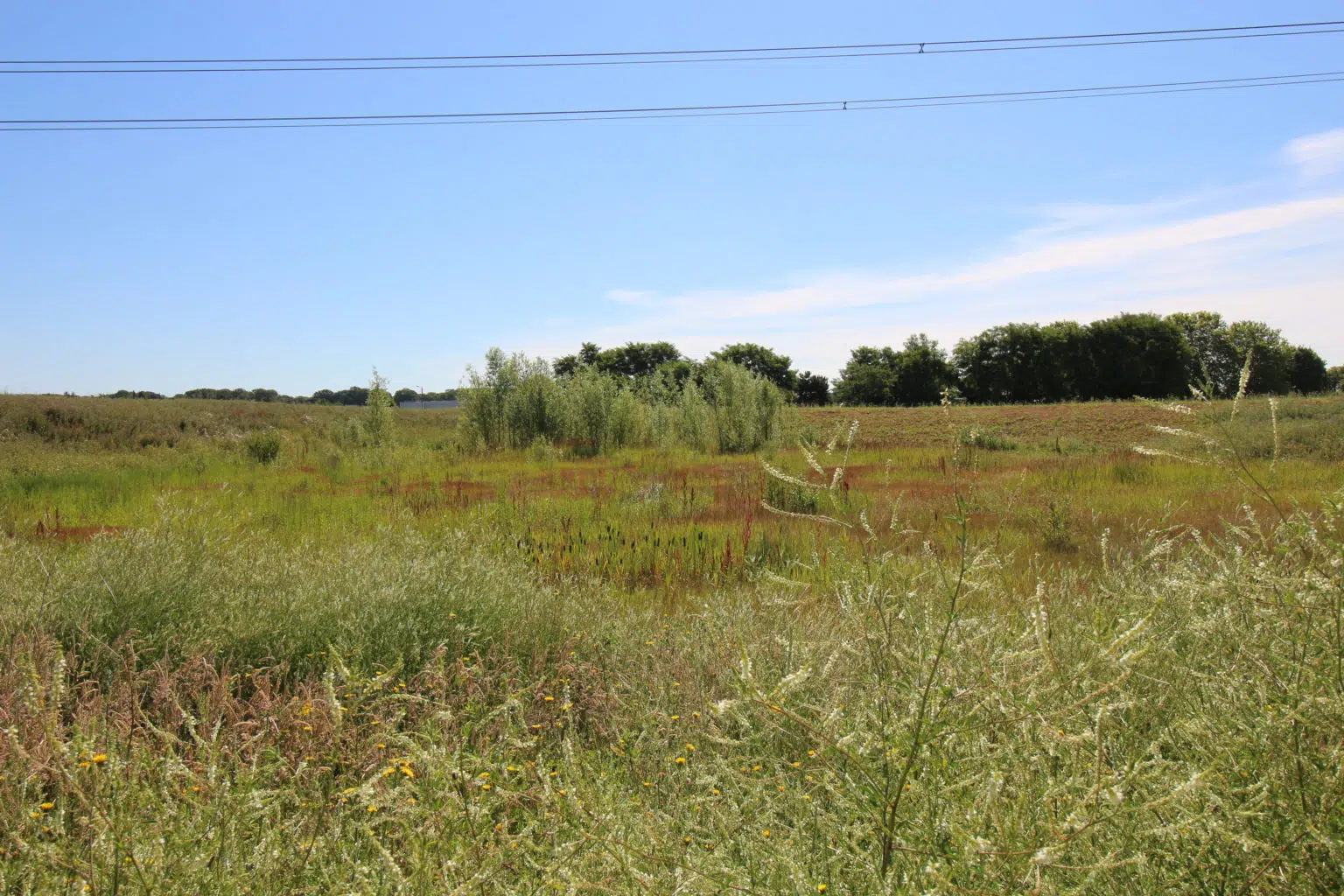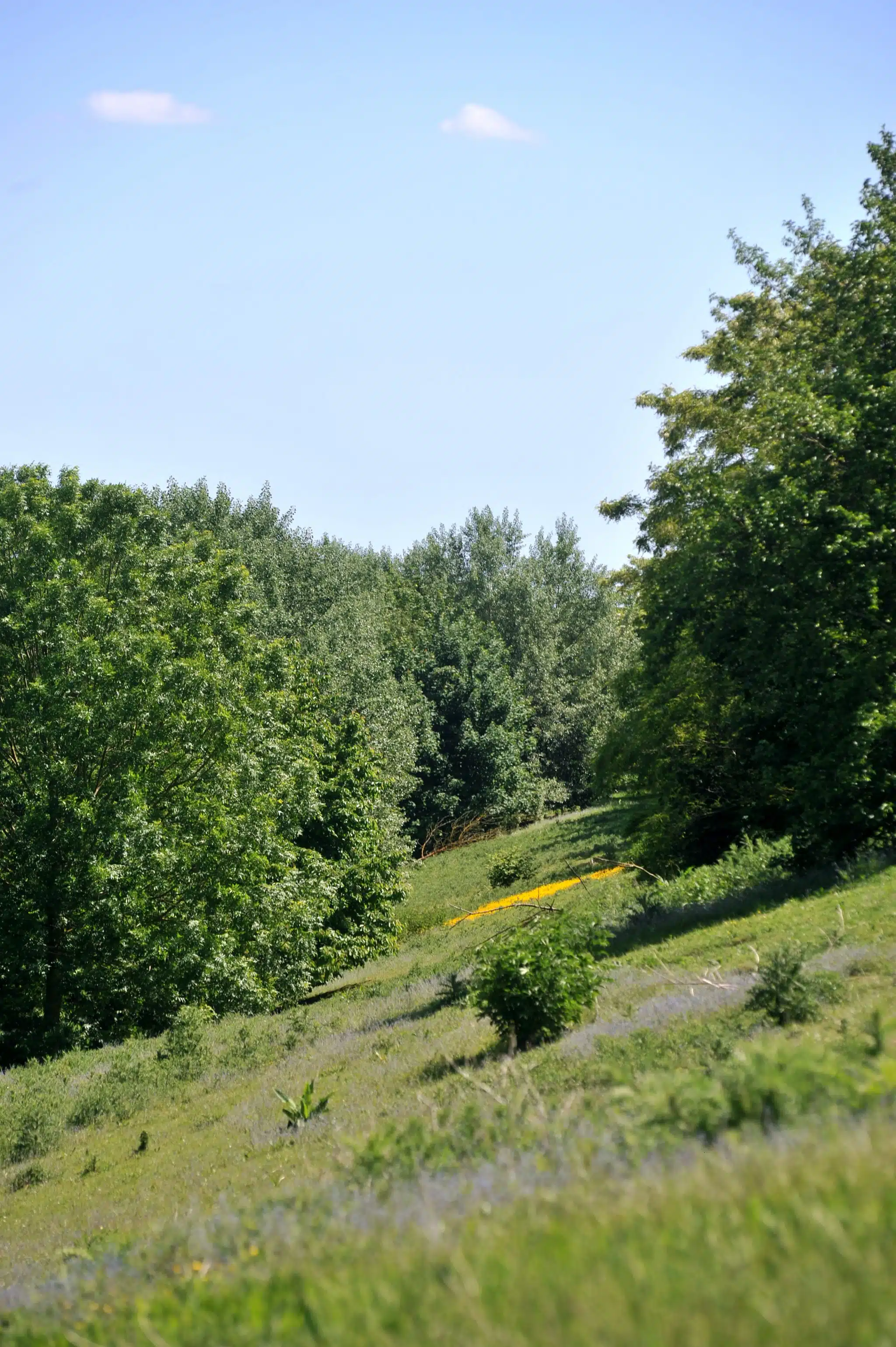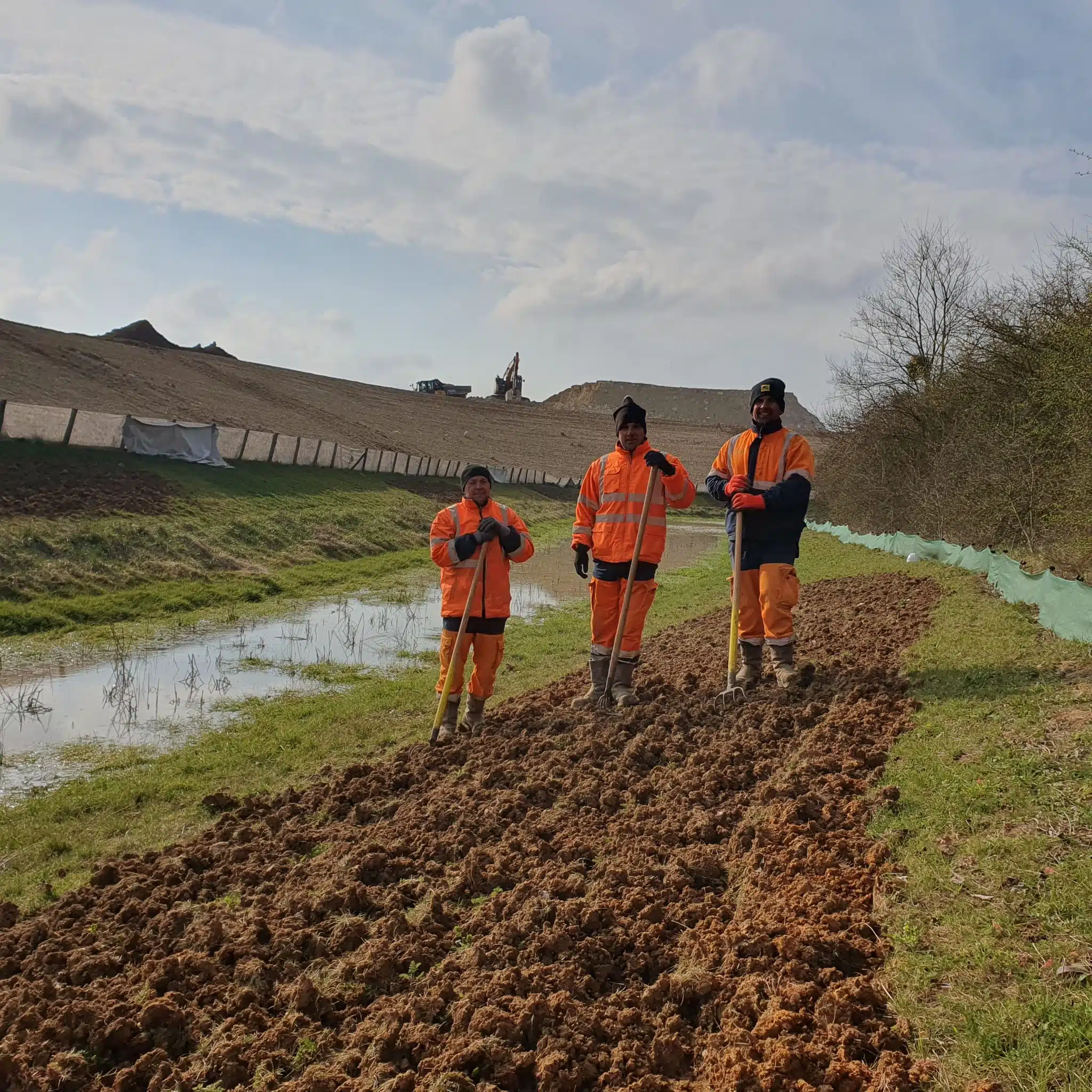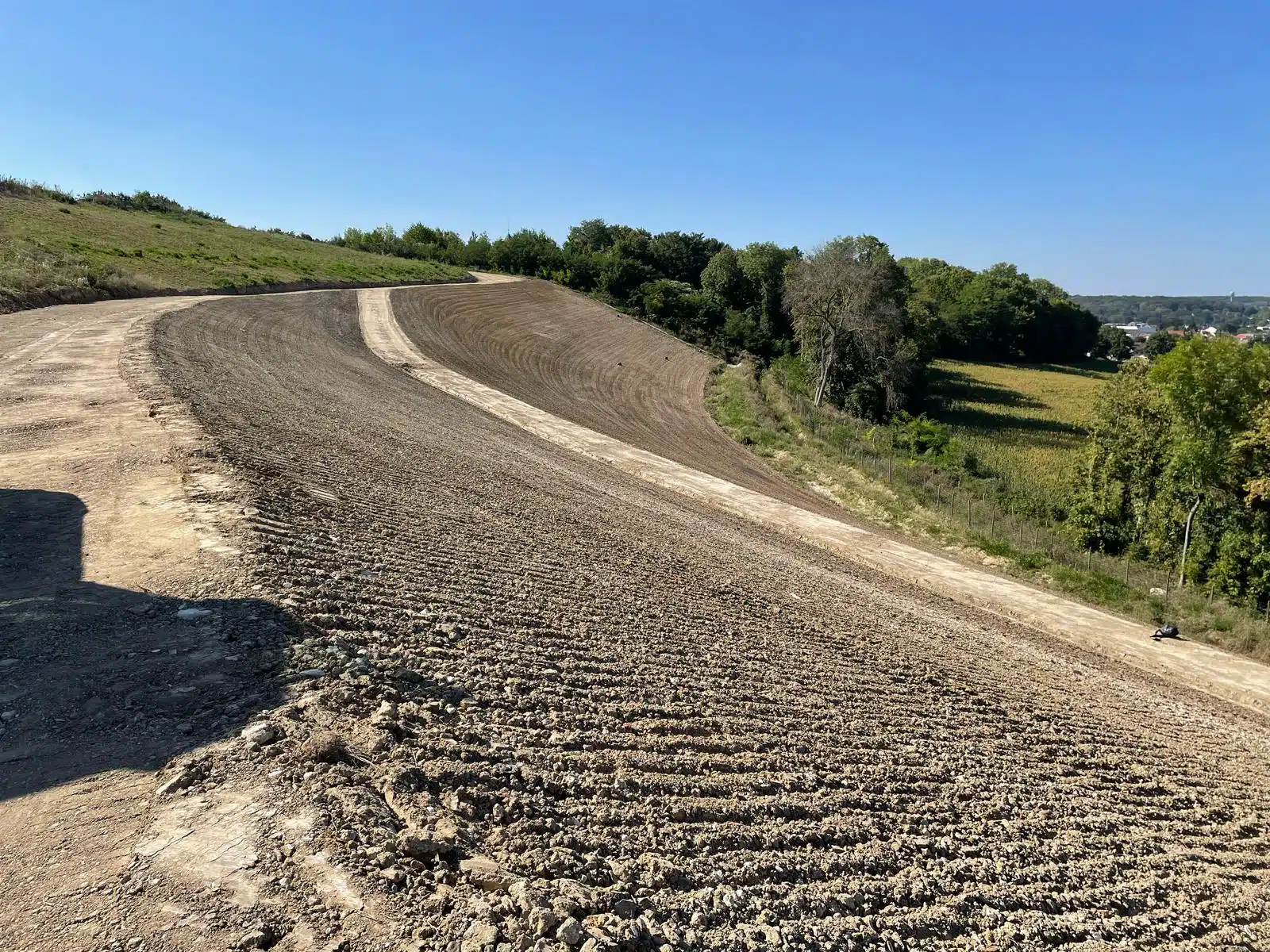Every ECT green development project is part of an approach to environmental enhancement and biodiversity preservation. This consideration of ecological issues begins at the design stage. It must continue after the site has been restored. After renaturation and revegetation by our development teams, a management and maintenance guide is drawn up. It is then sent to the site owner. This document provides targeted recommendations to ensure that the restored environments are maintained.
Handing over the guide to the site manager
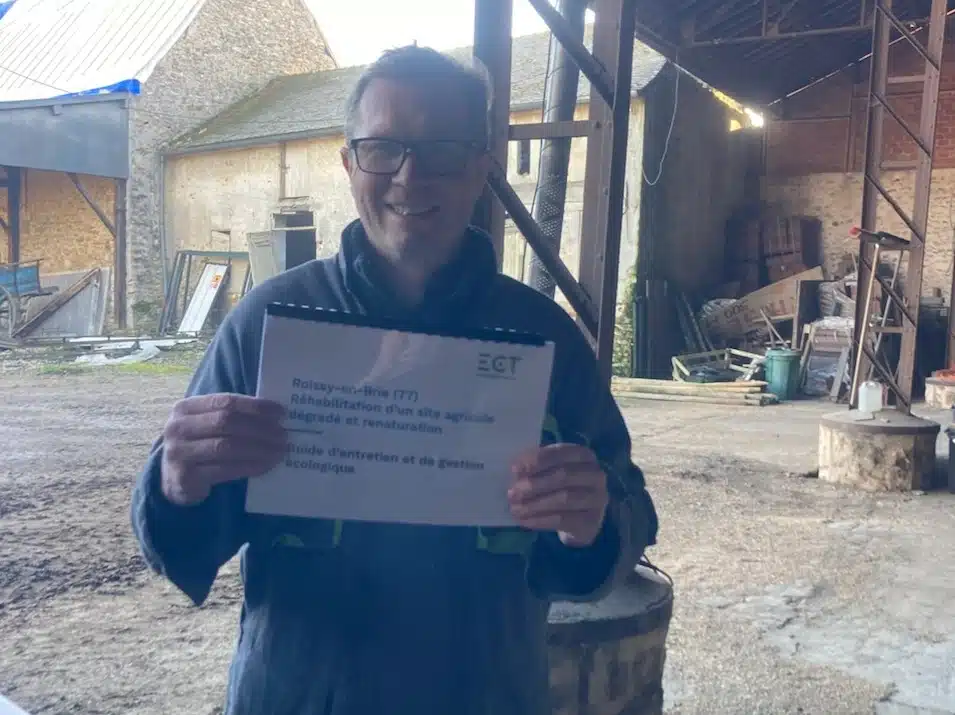
Preserving hedgerows and ponds to strengthen the resilience of agricultural areas in Ile-de-France
December 2024 – In Roissy-en-Brie, Seine-et-Marne, ECT has provided the farm manager with a management and maintenance guide, a roadmap of obligations and best practices for managing plantations, maintaining ditches and wooded embankments, and preserving the area and local biodiversity.
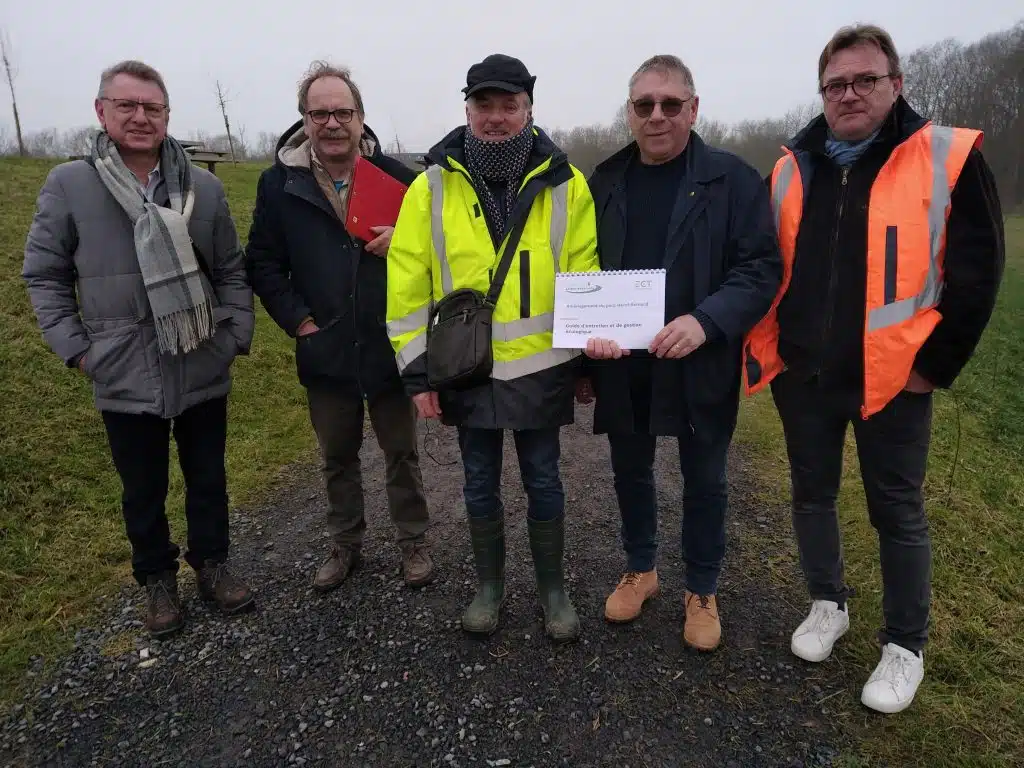
Perpetuating biodiversity spaces in urban parks in Hauts-de-France
January 2025 – In the Hauts-de-France region, ECT has provided the Loison-sous-Lens town council with an ecological management guide for the upkeep of the Parc Henri Bernard and Square de la Pierre Bleue. The document, drafted by Guillaume Lemoine and ECT, details the maintenance of meadows, woodlands, wetlands and orchards.
A concrete commitment to biodiversity
ECT is an Entreprise Engagée pour la Nature with the Office Français de la Biodiversité. Our projects promote biodiversity in urban and peri-urban environments. Integrating environmental concerns into site management is a priority. This guide is an essential tool to support managers in their ecological approach.
The guide is structured to address all the issues at stake:
- The history of the site and a description of its development
- Specific recommendations for different ecological environments : open spaces, wetlands, forests and shrublands, orchards, meadows and paths.
- A detailed maintenance schedule for each type of ecosystem
- Equipment recommendations
A tool integrated into our environmental approach
This guide is fully in line with the objectives of standard X32-001, integrated into our ISO 14001-certified Environmental Management System. It illustrates our determination to ensure sustainable monitoring of our developments and to promote ecological management practices adapted to each site.
